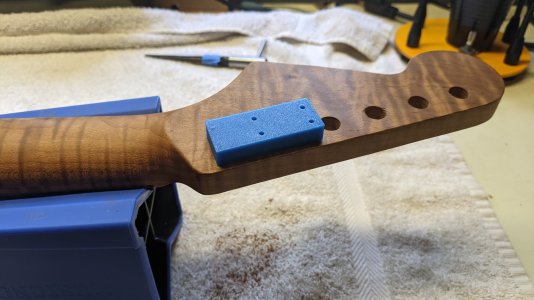justsomeguy1
Junior Member
- Messages
- 74
https://www.thingiverse.com/thing:4747019
I had this jig 3D printed to assist in drilling tuner locator pin holes in my headstock to accomodate my Schaller tuners. Ordered the 9.92mm Schaller holes in the headstock. Actually hole diameter I'm measuring around 9.60mm. Tuners fit but are very snug. The jig does not fit however.
Anyone good at looking at STL files?
Wondering if:
A) the design itself is wrong for what I'm trying to do
B) the print was somehow messed up
C) the STL is not correct
Would be helpful to know before I drop money on a 25/64" reamer.
I had this jig 3D printed to assist in drilling tuner locator pin holes in my headstock to accomodate my Schaller tuners. Ordered the 9.92mm Schaller holes in the headstock. Actually hole diameter I'm measuring around 9.60mm. Tuners fit but are very snug. The jig does not fit however.
Anyone good at looking at STL files?
Wondering if:
A) the design itself is wrong for what I'm trying to do
B) the print was somehow messed up
C) the STL is not correct
Would be helpful to know before I drop money on a 25/64" reamer.



